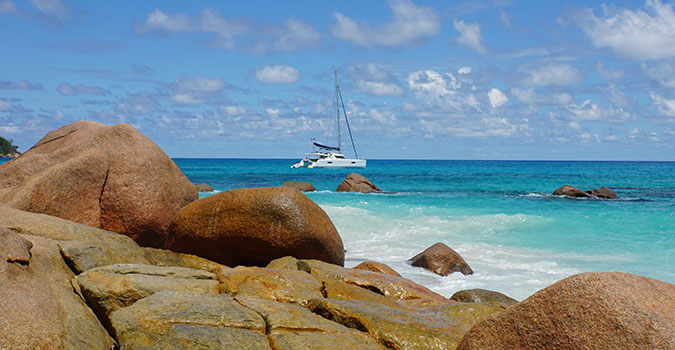Story by Phillip Berman / June 20, 2017


Many buyers who contact us these days develop some very strong personal preferences about a range of things: dagger boards versus keels, Yanmar versus Volvo, Flybridge versus Bulkhead Helms, etc. etc. Many buyers send us long “Must Have” lists.
One of the “Must Have’s” we are getting from some buyers these days is: “straight shaft engines.” Either there is a builder or two out there touting them because that is what they happen to offer, or some forum or blog or owner group stating their superiority, but we see a bit of an uptick in people who think straight shafts are the only way to go. What is clear to me is that most of these catamaran purchasers do not fully understand the advantages and disadvantages of straight shafts over sail drives or recognize how many limitations and negatives they pose for catamarans under 50 feet in length. Let me clear a few things up.

I have heard some internet chatter that straight shafts are better if you run aground, but I strongly disagree. If you run aground hard with shafts or sail drives and for any reason they are not protected by a keel, or mini keels, or a skeg, you are going to have a bit of a mess on your hands either way. One of the reasons I much prefer engines in their own watertight engine rooms is that if one does run aground and water enters the engine room from a broken shaft or sail drive leg, the water remains in the engine room, never enters the living quarters where water damage leads to major floor and woodwork repair in general.
The upshot of all this: Getting hung up on shafts or sail drives as a major purchasing concern is quite unwarranted. If having a shaft is something you are so convinced you must have, bear in mind you will live with all the advantages as well as the disadvantages noted above. More importantly, you will learn very quickly when you start to shop for a cat that 95% of the builders today have all concluded that the advantages of sail drives far outweigh their disadvantages on cats below 50 feet and are therefore superior for use in the smaller modern catamaran. I happen to agree.
Awesome company that worked as my brokerage on purchasing out FP catamaran. A special shoutout to Will Miller for walking us through the process
The process of selling our boat was made very smooth by the Multihull Company and Andrew Hodgdon in particular. Andrew helped us navigate the selling process including moving our boat from Grenada to Florida to execute the sale. We would recommend working with this company, and Andrew Hodgdon in particular, without hesitation.
Very smooth process. Chuck was great and very knowledgeable about the whole process. Im happy to have had TMC to take care of all the things i didnt know about.
Andy
We feel like we got tremendous service from Chuck. He is a total professional, knowledgeable, confident and a natural salesman. While I’m really sad to give up the boat, we are compl we are completely satisfied that Chuck sold it for us.
The Multihull Company-St Augustine, and in particular Andrew Hodgdon handled the sale of my Balance 442 Catamaran. Andrew was professional, transparent and a pleasure to do business with.
Successful relationships cannot exist without it. At The Multihull Company we base every relationship on a firm commitment to earning and retaining our client’s trust.
Advice of any kind is valuable only when grounded in hard-won expertise. It too, must be trustworthy. Trust and expertise define the heart and soul of The Multihull Company. We are a team of skilled professionals who thrive on providing expert, trustworthy advice and service to catamaran and trimaran sailors around the globe.
Read More